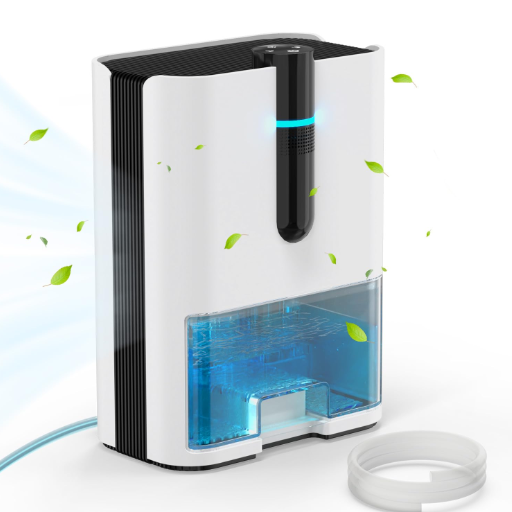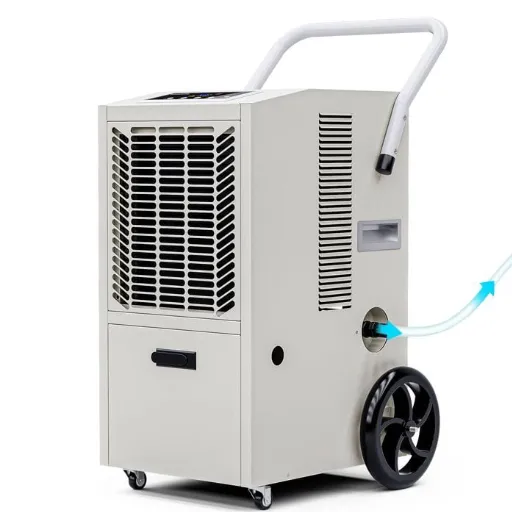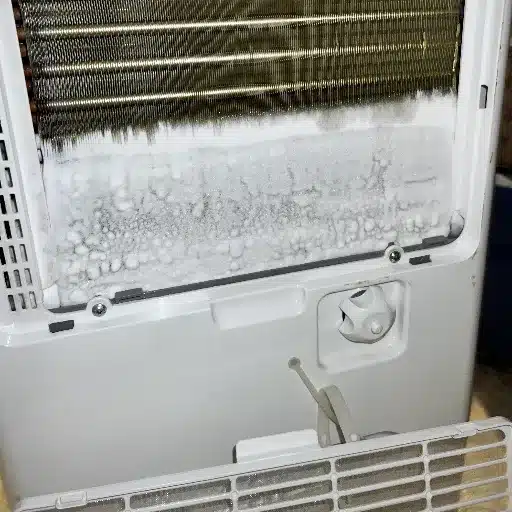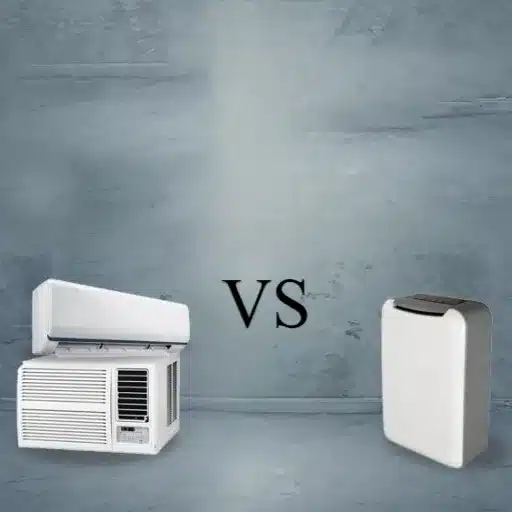Moisture buildup in bathrooms can lead to a range of issues, from persistent odors to the growth of mold and mildew, which can compromise both the aesthetics and hygiene of your home. For homeowners looking to maintain a dry, comfortable environment, portable bathroom dehumidifiers are a game-changing solution. Compact yet powerful, these small appliances are designed to combat excess humidity and safeguard your living spaces from its damaging effects. In this guide, we’ll explore everything you need to know about portable bathroom dehumidifiers, including their functionality, benefits, and how to choose the best one for your needs. Whether you’re dealing with a damp bathroom or simply looking to prevent potential humidity-related problems, this article will provide the insights and advice you need to make an informed decision.
Understanding Dehumidifiers
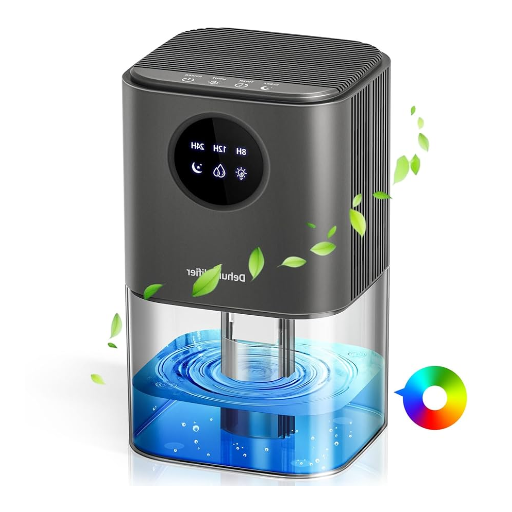
What is a Dehumidifier?
Adehumifying appliances help in taking moisture from the air, balancing the interior humidity level. It does so by taking the air with moisture inside it and pulling the water out of it, then releasing drier air. This serves to reduce indoor humidity, which could be a problem leading to mold and mildew or even the deterioration of building materials.
There are two main methods of operation. The refrigerative type cools the air and makes moisture condense, while the desiccant variety uses absorbent materials to soak up humidity. The choice of which type to use depends on the size of the room, temperature, and the level of dampness. Modern-day dehumidifiers carry with them numerous conveniences like adjustable settings and displays to inform the homeowner about the status of operation, with an auto-shutoff function for their convenience and greater efficiency.
Dehumidifiers are usually employed in wet areas such as the bathroom and the basement, where humidity is much higher due to limited ventilation and water usage. Regular operation of a dehumidifier will lend to a comfortable environment as well as extend the life of structural materials and furnishings, thereby minimizing potential costs in maintenance.
How Do Dehumidifiers Work?
To keep the indoor humidity levels in check, dehumidifiers must rid the air of excess moisture. The device pulls in air using a fan, and this air passes over the refrigerated coils. Since the temperature drops, the water vapor condenses in liquid form. The water can either be held in the reservoir or drained out through a hose that connects to the dehumidifier, depending on the design of the unit.
Once the moisture has been sucked up, the dehumidifier warms the air slightly and pours it back into the room. This allows the room to be dry and comfortable without drastically cooling the air.
By balancing humidity levels, dehumidifiers keep places available for mold growth, dust mites, and allergens at bay. This creates a healthier space yet keeps building materials and furniture safe from moisture-tracking damage. Since their working process is fairly simple, these are solutions that work for varying settings.
Types of Dehumidifiers: Choosing the Right One
Picking a dehumidifier based on the exact needs of the area will guarantee maximum efficiency. The two major sorts of dehumidifiers are refrigerant (compressor-based types) and desiccant types. Refrigerant dehumidifiers are suitable for warm and humid environments. They cool the air, thus allowing moisture to condense and be collected. They work well in residential areas, such as basements or living rooms, where the ambient temperature generally stays above 60°F.
Desiccants, however, use absorbent materials to absorb moisture from the air and hence are more suitable for colder atmospheres or drier ones. These devices can work well in unheated areas such as garages or crawl spaces due to the fact they cannot rely on temperature to work.
In addition to space size, required capacity (pints/day), and other features such as energy rating or ease of maintenance, you need to know your exact environmental conditions and what your dehumidifier will be used for to find that particular dehumidifier that will help retain a healthier and more comfortable indoor climate.
Benefits of Using a Small Dehumidifier for Your Bathroom
Combatting Bathroom Mold and Mildew
The combination of high humidity levels and minimal ventilation renders the perfect breeding ground for fungus; hence, mold and mildew are very common in bathrooms. Mold spores will also destroy surfaces such as grout, tiles, and walls, and they pose serious health issues for people who have allergy problems, asthma, or a weakened immune system. An efficient small dehumidifier can greatly reduce moisture levels suspended in the air, thus checking the very lead-up to mold and mildew formation. Bearing in mind to keep relative humidity levels below 50%, a suitable dehumidifier will always prevent the formation of excess moisture, keeping your bathroom dry and sanitary.
Researches corroborate the link between humidity control and indoor air quality and stresses the need to provide superior ventilation and dehumidification to places like bathrooms. High-performance dehumidifiers have been designed to run silently in small spaces while using state-of-the-art technology to draw moisture even from the humid air generated during showers. Most units have digital hygrometers built in so users can monitor humidity levels and regulate to optimal settings. Modern units, because of their timer and auto-shutoff features, in addition to the ease of filter changes and green designs, are hassle-free to maintain and always effective.
A good dehumidifier is capable of efficiently augmenting mold spore removal with thorough cleaning and ventilation. For the person refurbishing an old bathroom or wrestling with stubborn fungal problems, a little dehumidifier combined with mold-resistant paint and mold-cleaning agents would be rewarding in the long run. Such a regimen shields all surfaces and dramatically upgrades the indoor air quality that way reducing the health hazards associated with microbial and allerg exposure. That said, purchasing one for bathrooms only should be the first step toward maintaining a mold-free, clean environment.
Improving Air Quality and Comfort
If the air inside is optimized and made maximally comfortable, it requires a layer of advanced refining. HEPA-type filters act as the last layer of filtering and can remove 99.97% of particles that measure 0.3 microns, such as dust, pollen, and smoke. These filters prove to be excellent in reducing allergen loads within the home and are greatly appreciated by a lot of people with respiratory disorders.
The modern systems might be equipped with activated carbon layers capable of adsorbing odors and VOCs and could even come integrated with UV-C light for bactericidal, viricidal, and microbicidal capabilities. However, newer avenues of research highlight the potential of integrated filtration plus humidity control systems toward achieving air quality while at the same time preventing the growth of mold and bacteria in moisture-prone areas.
To ensure the evaluated performance yields desired effects in the application, it is very much recommended to ensure that the chosen system is ANSI/AHAM AC-1 performance certified concerning the room-to-filtration capacity ratio. Maintenance is a must, in particular, the timely replacement of filters, in order to ensure continued efficiency. All of the solutions disperse into a more healthful environment within the structure that assists with respiratory health for a long time and overall well-being.
Energy Efficiency and Cost Savings
The precociousness of energy-saving systems is rightly conceived to balance between actuation performance and long-term savings. Upgraded technology in air filtration and HVAC introduced an energy-efficient design that dramatically decreases power consumption though void of any compromise in performance. For example, Energy Star-qualified systems are designed to consume as much as 30% less energy than an average system, fostering energy savings that could have rather gone into utility bills and maintenance of good indoor air quality. The energy utilization is enhanced by the use of advanced sensors and smart controllers, allowing systems to alter their output dynamically depending on the occupancy of the room and air quality.
Looking at it from a cost point of view, the reduction in the cost of day-to-day running by an energy-efficient system is a means by which the system perfects its return on investment eventually. Also, it just appears that if less energy is needed, less stress goes on those components that are critical, thereby increasing the lifespan of the equipment and the costs of repair or replacement. On top of that, there are tax incentives and rebates in government programs for promoting energy-efficient technologies, which further cut the initial outlay. Given this improvement, the incorporation of energy-smart systems lends itself as a stateful consideration for any investment, residential or commercial.
Additionally, environmental sustainability is another goal of energy conservation. A reduction in demand for electricity directly influences emissions of greenhouse gases, as lower energy consumption is less able to support the generation of power through fossil fuels. Therefore, this is one area where such systems come from on their own accord, to naturally join hands with the sustainability concerns of the individual and the corporation. For a corporation, a good reputation could be built by linking such sustainability with brand identity as indicators of commitment to green and responsible practices. Inherent energy-efficient choices also fathom cost reduction, but in general view represent an ecosystem of personal and end benefits for all involved.
Choosing the Right Portable Bathroom Dehumidifier
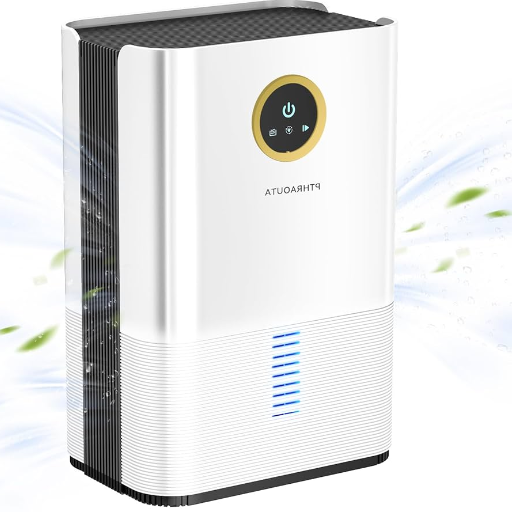
Key Features to Look For
- Capacity and Coverage Area: When selecting a bathroom dehumidifier, it is important to assess its moisture removal capacity. Wattage is sometimes expressed as pounds per day, or PPD. For a small enclosed area such as a bathroom, a 20-30 PPD device should work well. Also, the dehumidifier needs to consider its coverage area, which should correspond to the square footage of your bathroom to ensure good performance.
- Energy Efficiency Rating: Try to acquire dehumidifiers with Energy Star certification or other energy ratings. An efficient dehumidifier consumes less electricity while maintaining an adequate humidity level, thus saving the owner money in the long run, especially in high-humidity areas.
- Tank Size and Drain Options: Units equipped with large-capacity tanks require less frequent emptying, which proves to be an advantage when high-frequency use is involved. Otherwise, units with continuous drain or pumping drainage work allow draining to be performed automatically, thereby ensuring a trouble-free operation when moving high levels of humidity.
- Noise Level: In general, a portable dehumidifier designed for use in the bathroom should be fairly quiet, falling somewhere within the 30-50 decibel range, mainly to ensure comfort for anyone that might be around it while at work, especially where such use might interfere with being in a shared or household space.
- Built-In Humidistat with Auto Shut-Off: A dehumidifier with a built-in humidistat allows for precise control of ambient humidity levels. The device can be set to a target range and will activate or deactivate as necessary to maintain that level. An auto shut-off function for when the tank is full also adds convenience and helps prevent accidental spills.
- Compact Design and Portability: For bathrooms where space is limited, having a compact unit boasting an elegant design with built-in handles or wheels is highly sought after, making movement and storage easy without compromising any functionality.
- Advanced Filtration Systems: The modern dehumidifier often comes with a filtration system to treat metals, dust, allergens, and bacteria, along with the removal of excess moisture. This is a great two-fold benefit for bathrooms where inadequate ventilation may worsen mold and mildew development.
- Durability and Maintenance Requirements: Ensure that the dehumidifier is made of strong materials resistant to corrosion caused by moisture. Also, frequent maintenance like filter replacements and cleaning must be as easy as possible to help maintain constant performance throughout time.
By examining these critical features and matching them to your specific bathroom environment, you can make an informed decision that addresses both functionality and efficiency.
Size and Capacity Considerations
Capacity and size are factors that affect performance and bathroom suitability concerning the particular dehumidifier. Size represents the actual size of the dehumidifier, and capacity is the unit’s ability to take moisture from the air, measured in pints per day (PPD). For small to medium-sized bathrooms, generally, a 20 to 30 PPD dehumidifier will suffice, whereas larger and more humid spaces will require models with the ability to take out 50 PPD or more.
It is also highly recommended that the capacity of the dehumidifier be suited to the specific level of humidity in the bathroom. For example, the higher capability will be needed for those high-humidity bathrooms where mirrors and walls get condensation much of the time. Many dehumidifiers come with adjustable humidity settings, giving the user more control over moisture levels to minimize mold growth and maximize comfort. Recent statistical analyses reveal that mismatching capacity reduces the efficiency by as much as 40%, underscoring the importance of correct evaluation when selecting the dehumidifier.
Besides, being compact and portable remains a plus for smaller bathrooms so that they can keep the walkway clear without compromising functionality. Manufacturers often include room-size ratings defined in square footage to make the decision easier. For example, a 300 square foot bathroom would be paired well with a medium-level unit rated for spaces up to 500 square feet, so its overshadowing capacity ensures peak performance. All these factors together help ensure that the dehumidifier you choose fits the actual size of your bathroom while effectively controlling moisture levels according to your specific needs.
Noise Levels and Maintenance Requirements
The noise factor is essential when scrutinizing dehumidifiers for bathrooms and other spaces where low volume is preferred. Usually, noise from dehumidifiers is measured in decibels or dB, with a lower rating denoting a quieter working. Noise from small space units is usually measured around 40 to 50 dB-akin to the soft plop of rainfall. Conversely, big heavy-duty units may cross 55 dB very easily. Models with noise-reduction technology, such as insulated compressors and variable speed fans, are advantageous for bathrooms located near bedrooms or any area where calm should be maintained.
Maintenance requirements should be considered when estimating the longevity and effectiveness of your dehumidifier. A majority of units have a removable water reservoir, which necessitates regular emptying or a direct drain option for uninterrupted functioning. The more sophisticated ones boast full-tank indicators or auto-shutoff features to prevent spillage. Sweeping and cleaning the air filters regularly also assists in keeping good air quality, all the while preventing the system from getting clogged with dust. Washable and reusable filters make this cleaning task easier, while some of the higher-end models even give filter change alerts that remind users when it’s time for a replacement.
In addition, desiccant dehumidifiers utilize a chemical absorbent for moisture extraction; hence, they do not require the maintenance that compressor systems demand, other than general cleaning. These about-the-least-maintenance ones might attract users seeking quieter and lower-maintenance choices. The very care and maintenance given to any unit will ensure that its performance remains consistent, that it retains its energy efficiency, and that its life span is prolonged, especially in places with drastic humidity fluctuations such as bathrooms.
Top Small Dehumidifiers for Bathroom Use
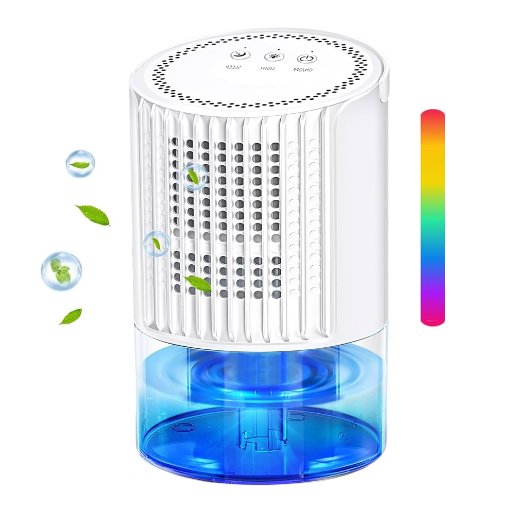
Product Comparison: Features and Prices
Below is a detailed comparison of top-performing small dehumidifiers for bathroom use, highlighting their key features, capacities, and price points. These units are evaluated based on their efficiency, ease of use, and suitability for areas with high humidity levels.
|
Product |
Dehumidification Capacity |
Tank Size |
Noise Level |
Energy Efficiency |
Price Range |
|---|---|---|---|---|---|
|
Pro Breeze Mini |
18 oz/day |
52 oz |
< 40 dB |
Low power consumption |
$50 – $60 |
|
Eva-dry E-333 |
6 oz/day |
0 (renewable) |
Silent (no motor) |
Regenerates without power |
$15 – $25 |
|
Hysure Portable |
10 oz/day |
27 oz |
< 35 dB |
Energy-efficient thermo-tech |
$40 – $50 |
|
SEAVON Electric |
16 oz/day |
42 oz |
< 39 dB |
Automatically shuts off |
$45 – $55 |
|
Afloia Q3 |
11 oz/day |
35 oz |
< 38 dB |
Environmentally friendly |
$55 – $65 |
Best Choices for Different Budgets
- Budget Option: Pro Breeze Electric Mini Dehumidifier: And those who go the cheap route will probably appreciate the Pro Breeze Electric Mini Dehumidifier as somewhat efficient at removing moisture. With a price smaller than $40-50, this little unit can accommodate a 16-ounce water tank, drawing in 9 ounces of moisture every day. Small and portable in design, the almost completely silent thermoelectric cooling mechanism sees use best in small bathrooms with light to moderate humidity on the inside. So keep in mind: the dirt-cheap little guy might not be able to handle a really bad moisture problem due to limited capacity.
- Mid-Tier Option: SEAVON Electric Dehumidifier: A price-performance balance of the SEAVON Electric Dehumidifier can generally be proposed in the price range of $60-80. This unit has a 27-oz water tank and can take out almost 12 oz of moisture in a day. It has an automatic shut-off to avoid tank overflow and an LED indicator to alert you when the water tank is empty. Its somewhat larger size would tackle situations of medium-high humidity, rendering it fit for most bathroom environments.
- Premium Option: Tenergy Sorbi Air Dehumidifier and Purifier: The Tenergy Sorbi Air Dehumidifier and Purifier would be an extra-star pick for the high-budget purchase at a price of around $120-150. A double agent setting between HEPA filtration and dehumidification, this makes sure that excess moisture gets sucked out of the air with all other contaminants. The 1-liter water tank capacity allows for better performance, especially in bathrooms that see higher chances of humidity or mold. Equipped with a real-time humidity display and auto-shutoff, this is an efficient and user-friendly device. This high-end selection is for those who favor the reliability and functionality of their purchase.
The mentioned alternative fits different budget ranges and offers different performance levels and features for a variety of needs. The right choice should be taken in consideration of the bathroom size, humidity-condition, noise level, energy efficiency, and other related properties.
Maintaining Your Bathroom Dehumidifier
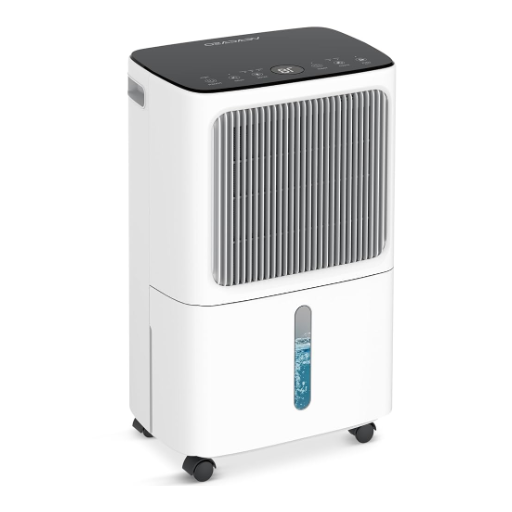
Regular Cleaning and Filter Replacement
Regular cleaning and filter-changing are the key to keeping the bathroom dehumidifier working properly and prolonging its lifespan. Over time, dirt, debris, and mineral deposits can cut down efficiency and eventually cause malfunctions. Be sure to first check the manufacturer’s user manual for any cleaning specifications and requirements for your particular model.
In general cleaning, be sure the dehumidifier is switched off and unplugged. Remove the water reservoir and wash it with warm, soapy water to prevent mold formation. The outside and vents can be wiped down with a soft cloth slightly dampened with water. Filters, which are the primary cleansing components, should be cleaned or replaced according to instructions in the user manual, generally every one to three months, depending on how much you use it and the conditions of your environment.
For those want to go further to optimize longer-term performance, measures of airflow and humidity after the maintenance should be taken. A regular replacement or maintenance of the filters enhances air quality while lowering power consumption, since it allows the device to work with as low resistance as possible. Such practices lead to guarantee of reliability and cost-effectiveness of the dehumidifier in the long run.
When to Replace Your Dehumidifier
Knowing when to substitute a dehumidifier is essential for attaining favorable indoor air quality and preserving energy efficiency. The average dehumidifier would last between 5-10 years, depending on its quality and decent maintenance. While there exist a few indicators too for replacements.
- Diminishing Performance: Less moisture is removed by the dehumidifier while the unit has been cleaned and maintained properly; hence, it is a sign of degradation in some internal components.
- Excessive Noise: If your dehumidifier suddenly starts making noise louder than the usual hum, this could be a troubling sign for the motor or the fan assembly, wherein replacement will become cheaper than repairing it.
- Repairing Frequently: When repairs of a dehumidifier keep on becoming almost equally costly, or even more expensive than buying one, then the latter becomes the affordable option.
- Loses Energy Efficiency: Old dehumidifiers consume more electricity than the new ones that are ENERGY STAR rated. So getting one always saves on the energy bills and is greener at heart.
- Leakages of refrigerant: Dehumidifiers with older refrigerants like R-22-now phased out due to environmental hazards, are best replaced with modern alternatives.
Keep close tabs on these signs of malfunction, for they will only serve to lower your indoor air quality, hike operational costs, and lessen the efficiency of your system. Replacing your dehumidifier well before it outlives its good use will maintain performance and comfort in your environment.
References
-
ENERGY STAR provides detailed information about portable room dehumidifiers, including their usage and energy efficiency.
-
Mississippi State University – Housing and Residence Life discusses the benefits of using small dehumidifiers to prevent mold growth.
-
PubMed Central (PMC) offers insights into the clinical impact of dehumidifiers, particularly in health-related contexts like asthma.
Frequently Asked Questions (FAQ)
Q: What is a portable bathroom dehumidifier?
A: A portable bathroom dehumidifier is a compact device designed to remove excess moisture from the air in bathrooms and similar spaces. It helps to prevent black mold growth, musty odors, and dampness, making your bathroom a healthier environment.
Q: How does a portable dehumidifier work?
A: Portable dehumidifiers work by drawing in moist air through a fan, cooling it down to condense moisture, and then collecting the water in a tank. This process helps to reduce humidity levels, making the air drier and more comfortable.
Q: What size dehumidifier do I need for my bathroom?
A: The size of the dehumidifier needed depends on the square footage of your bathroom. For standard bathrooms, a unit capable of handling 300-500 sq. ft. is generally sufficient. It’s essential to check the specifications of the dehumidifier, including its capacity in cubic feet.
Q: Can I use a portable bathroom dehumidifier in other areas like the garage or laundry room?
A: Yes, a portable bathroom dehumidifier can be used in various areas such as the garage, laundry room, or even RVs. It’s an effective moisture absorber that can help maintain a dry atmosphere in any enclosed space.
Q: How often do I need to empty the water tank?
A: The frequency of emptying the water tank depends on the humidity level in the air. Some units have an indicator light that signals when the tank is full, while others may require daily or weekly draining depending on their capacity, like a 27-oz tank.
Q: Are portable bathroom dehumidifiers noisy?
A: Many models are designed to be ultra-quiet, making them ideal for bathrooms where peace is essential. Look for features like “whisper quiet” or “runs quietly” to ensure minimal noise disruption during use.
Q: Do portable dehumidifiers require electricity?
A: Yes, portable dehumidifiers require electricity to operate. They can be plugged into any standard outlet, making them easy to move from one location to another, including rooms like the bedroom or closet kitchen.
Q: Can a portable bathroom dehumidifier help with odors?
A: Yes, by reducing moisture in the air, a portable bathroom dehumidifier helps to eliminate musty odors and prevents the growth of mold and mildew, resulting in a fresher-smelling environment.
Q: What features should I look for in a portable bathroom dehumidifier?
A: When choosing a portable bathroom dehumidifier, look for features such as auto shut-off, continuous mode, overflow protection, and easy-to-empty water tanks. Additionally, models with an LED light for tank status and energy-saving capabilities are beneficial.
Q: Is it effective to use a portable dehumidifier in a bathroom with an open window?
A: While an open window can help with air circulation, it may reduce the dehumidifier’s effectiveness. Using the unit while the bathroom door is open can help it draw in more air, but keep in mind that outdoor moisture may still enter the space.

